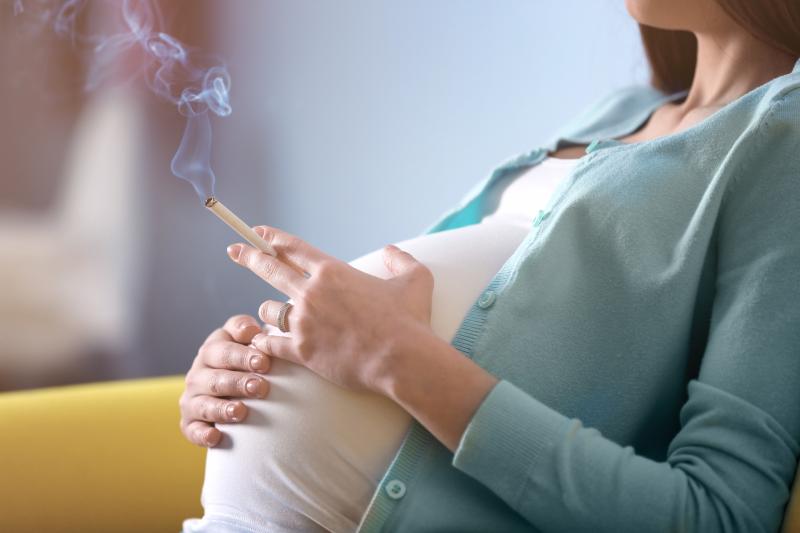
Mothers who smoke during pregnancy may confer an increased risk of fracture to their offspring during the first year of life, according to a study. However, prenatal exposure to cigarette smoke risk does not appear to have a long-term biological influence on fractures later in childhood up to early adulthood.
“The results of this study indicate that maternal smoking during pregnancy is associated with an increased risk of fractures before 1 year of age,” the researchers said.
This national register-based birth cohort study with a sibling comparison design included 1,680,307 individuals born in Sweden between 1983 and 2000 to women who smoked (n=377,367) and did not smoke (n=1,302,940) in early pregnancy. Participants were followed until 31 December 2014. Primary outcome was fracture by attained age up to 32 years.
A total of 377,970 fractures were recorded (overall incidence rate, 11.8 per 1,000 person years) during a median follow-up of 21.1 years. Maternal smoking during pregnancy correlated with fracture risk in offspring, and this association differed by attained age. [BMJ 2020;368:l7057]
In the entire cohort, an association was found between maternal smoking and a higher rate of fractures in offspring before 1 year of age. The corresponding birth year standardized fracture rates in those exposed and unexposed to maternal smoking were 1.59 and 1.28 per 1,000 person-years. The hazard ratio (HR) for maternal smoking compared with no smoking after adjusting for potential confounders was 1.27 (95 percent confidence interval [CI], 1.12–1.45).
A dose-dependent pattern was observed in this association (compared with no smoking: HR for 1–9 cigarettes/day, 1.20, 95 percent CI, 1.03–1.39; HR for ≥10 cigarettes/day, 1.41, 95 percent CI, 1.18–1.69). This finding was consistent in within-sibship comparison, but with wider CIs (compared with no smoking: HR, 1.58, 95 percent CI, 1.01–2.46).
In addition, whole cohort analyses revealed that maternal smoking during pregnancy could increase the fracture incidence in offspring from age 5 to 32 years, but this did not show a dose-dependent pattern. Within-sibship analyses, which controlled for confounding by measured and unmeasured shared familial factors, showed corresponding point estimates that were all close to null.
Of note, no association was found in any of the models between maternal smoking and fracture risk in offspring between the ages of 1 and 5 years.
These results supported those from two birth cohort studies that reported similar magnitudes of association between maternal and paternal smoking during pregnancy and childhood bone mass, “which implies residual confounding by unmeasured shared familial characteristics rather than a causal intrauterine effect of maternal smoking.” [Osteoporos Int 2015;26:1319-1329; Osteoporos Int 2011;22:1809-1819]
Furthermore, several studies suggested that tobacco control programmes could help reduce rates of preterm births and low birth weights, including hospitalizations due to asthma and lower respiratory tract infections in children. [Lancet Public Health 2017;2:e420-437; JAMA Pediatr 2014;168:e142365]
“Our results suggest that such interventions could potentially also reduce the risk of fractures in offspring before 1 year of age,” the researchers said. “However, we acknowledge that fractures in the first year of life are rare and the difference in fracture rate observed with smoking during pregnancy was small.”